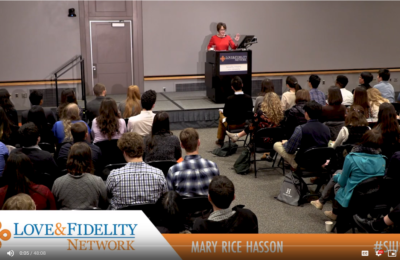The legacy of ‘Humanae Vitae’ at 50 years
June 18, 2018 | Published first in The Arlington Catholic Herald
Perhaps the most surprising thing about the encyclical “Humanae Vitae” 50 years on is how reports of its imminent death were continually exaggerated. Very few brave souls would have predicted in 1968 that the document would ever enjoy enthusiastic support from more than a few female Catholic intellectuals and the Catholic “woman in the pew,” even while it remains contested both in the church and in the world.
Rather, given the widespread acceptance of and hopes associated with contraception, most believed that the church would either alter this teaching or that it would be quietly ignored and the furor die down.
To understand the surprising survival of “Humanae Vitae,” it is important to understand what the “pill” was promising to the world. “Humanae Vitae” was written just eight years after the pill publicly was made available. Many predicted that the pill could end poverty and “overpopulation” by dramatically reducing the number of unwanted pregnancies.
It also promised to improve marriages and free women to take advantage of new opportunities outside the home that were opening up for them. Its manufacturer, G.D. Searle, delivered it to doctors with a paperweight of a naked, gold-painted, bare-breasted woman — Andromeda — with her head up, breaking free from her chains. On her back was the word “unfettered.”
Read more at The Arlington Catholic Herald.
Copyright Catholic News Service 2018. All rights reserved. Reprinted with permission.



